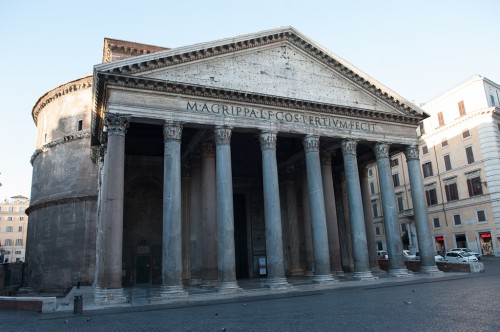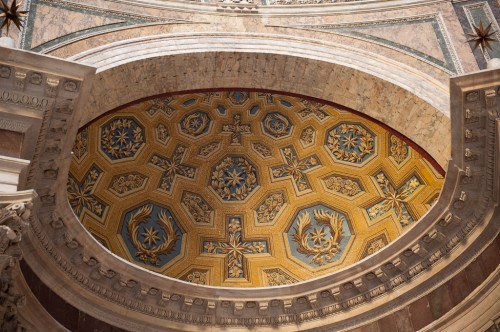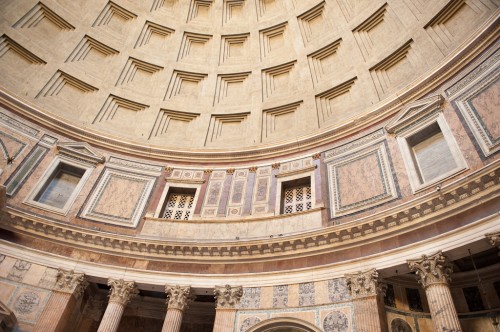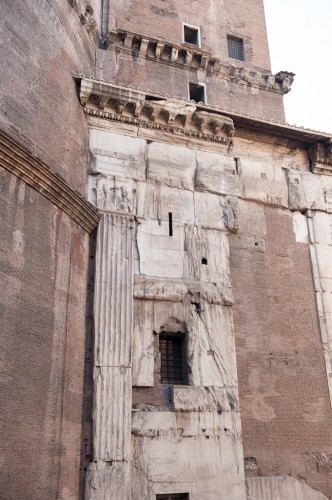Romans love their domes, and this is the mother of them all. This was the largest dome in the world until the 15th century. Don’t feel too bad, though, since it’s still the largest unreinforced concrete dome in the world.
The Pantheon originated in 27 B.C., when a temple was ordered by Marcus Agrippa. In 120 A.D., Emperor Hadrian built over the temple and dedicated his new, improved structure to the classical gods. In 608 AD, it became a Christian church.
Aside from the massive, awe-inspiring dome that could never be replicated today (modern experts scratch their heads at the Romans’ achievement as, among other structural considerations, it would collapse under the weight of today’s concrete), what else makes the Pantheon special? Well, it’s as wide as it is tall (43.3 meters), or more specifically the interior diameter equals its interior height. Light enters through an oculus in the dome, which facilitated a connection between the former temple and the gods. And, more practically, it absorbs and redistributes the heaving structural forces.
The Pantheon has also served as a burial chamber. Famous figures buried here are Raphael and kings Vittorio Emanuele II and Umberto I.
Michelangelo studied the Pantheon’s dome before he began work on St. Peter’s. The dome also served as inspiration for the British Museum Reading Room, Low Library at Columbia University and the State Library of Victoria in Melbourne.
Piazza della Rotonda, 8.30 a.m. to 7.30 p.m. Monday through Saturday, 9 a.m. to 6 p.m. Sunday, free admission







No comments yet.